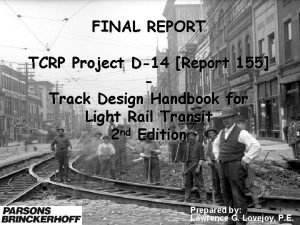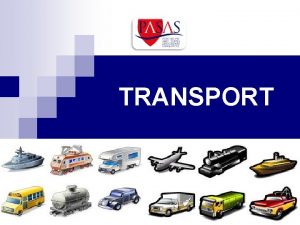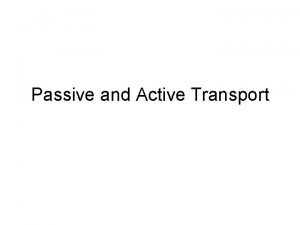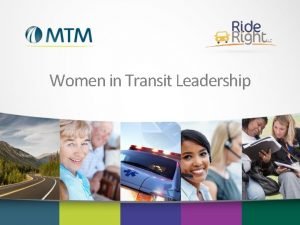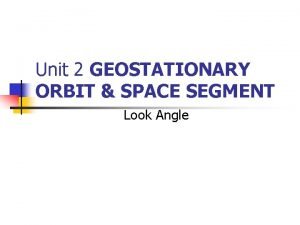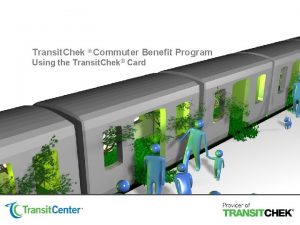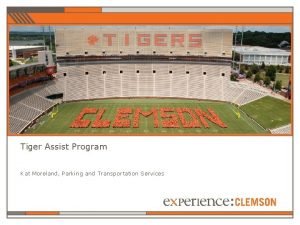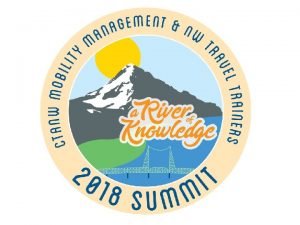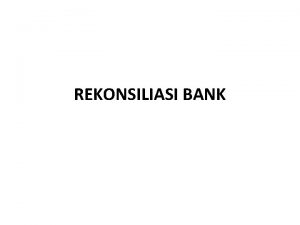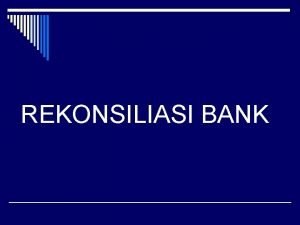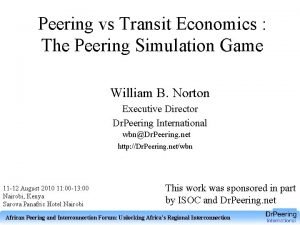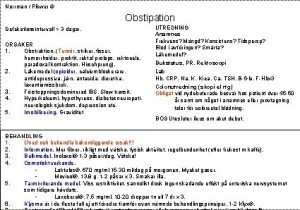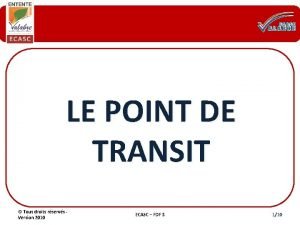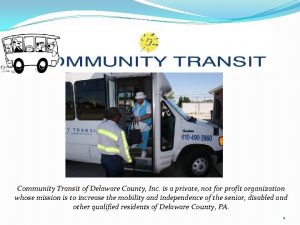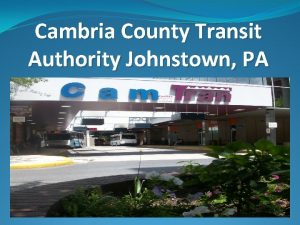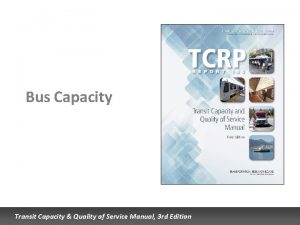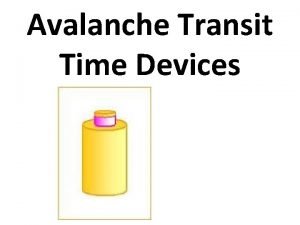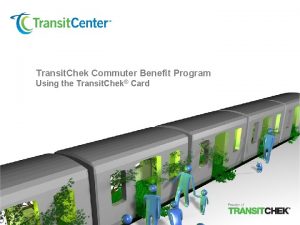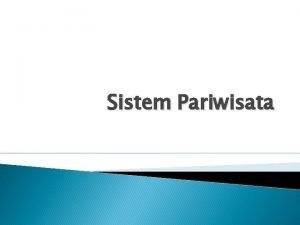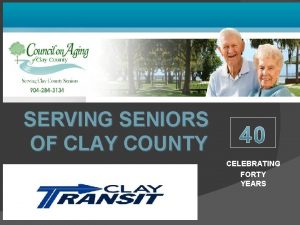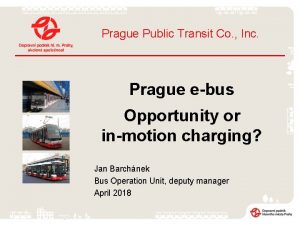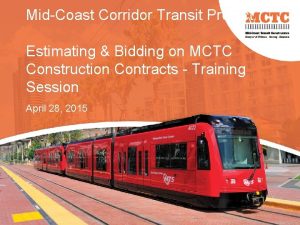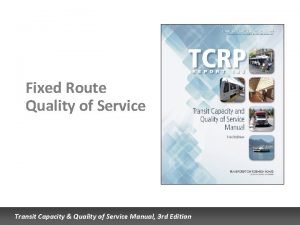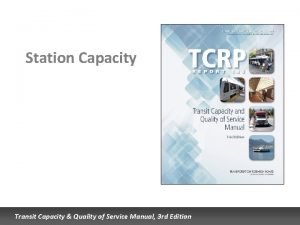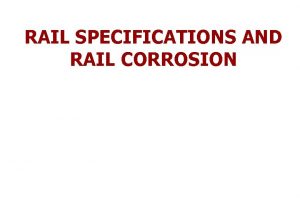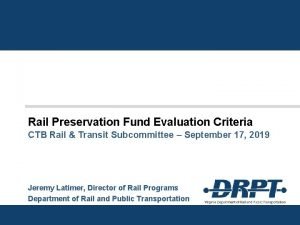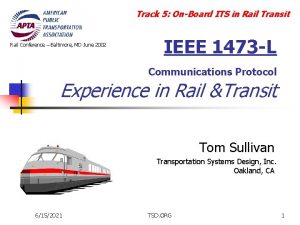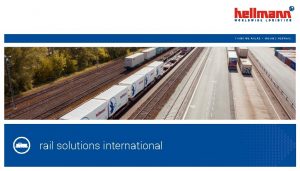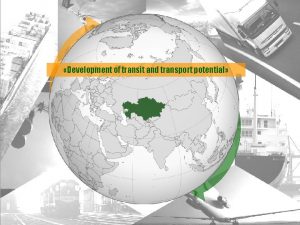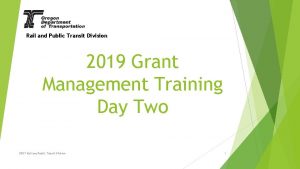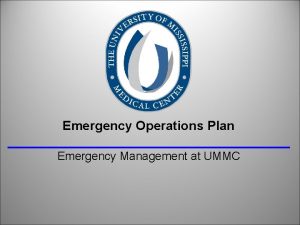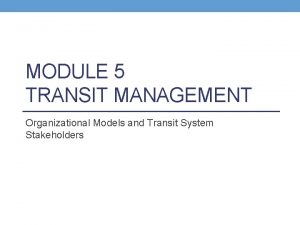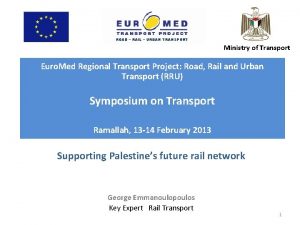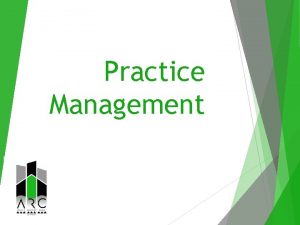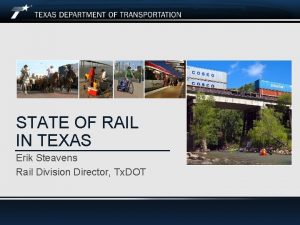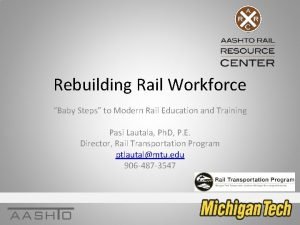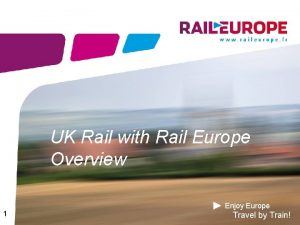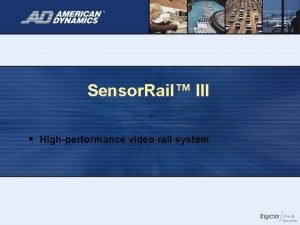Chongqing Rail Transit Emergency Management Practice Chongqing Transport






































- Slides: 38

Chongqing Rail Transit Emergency Management Practice Chongqing Transport Commission September, 2012


Chongqing is a typical city of mountains and rivers, where public transit system is put to a maximum use. Since June, 2005 when the first urban rail transit line was put into commercial service in Chongqing, we have always attached great importance to safety emergency management associated with rail transit operation. Thanks to initiative work, conscientious practice, and effective measures, there has been no operation safety related accidents; emergency incidents have been handled satisfactorily, and a treasure of emergency management experience specific to Chongqing rail transit has been accumulated.


I. Overview of Chongqing Urban Rail Transit The network of rail transit is taking shape in Chongqing, with three lines open to traffic, a served mileage of 75 km, and 60 stations. Specifically, Line 1 is 16. 5 km long, Line 2 is 19. 15 km long, and Line 3 is 39. 35 km long. The daily average passenger flow is up to 700 thousand person-times, accounting for 20% of the public transit volume of Chongqing. The highest daily passenger volume is 821 thousand person-times, the comprehensive on-schedule rate is 99. 73%, and the train graph achievement rate is 99. 93%.

According to the development plan of Chongqing rail transit, the served mileage would reach 145 km and the daily passenger flow would reach 1. 20 million person-times by 2012; and by 2015, a rail transit network of 208 km would be created and the daily passenger flow is expected to reach 2 million person-times, and the skeletons of a rail transit network would come into being substantially. A 820 km-long urban rail transit network consisting of "17 spokes and 1 ring" will be constructed in the long-term future, making it a urban transit backbone.

Chongqing rail transit system crosses rivers and mountains, includes frequent bridges, combines overhead and underground lines; this is the features specific to Chongqing rail transit. This system consists mainly of subway and straddle monorail components. The main line of straddle monorail sections is designed with a maximum grade of 50‰ and a minimum curve radius of 100 m. II. Main Features of Chongqing Rail Transit

II. Main Features of Chongqing Rail Transit (I) Many River-Crossing Sections Rail transit lines cross the Yangtze River and the Jialing River at several places. For instance, Line 3 crosses both rivers, and a bridge is built especially to help it cross the Jialing River. The bridge, about 2 km long, used by Line 3 to cross the Yangtze River also serves automobiles: the bridge deck is used for vehicular traffic and the underbridge is used for rail transit. Line 6, which is to be completed soon, crosses the Jialing River twice and the Yangtze River once; the bridges are all about 2 km long. Line 3 crossing the Jialing River

II. Main Features of Chongqing Rail Transit (II) Many Overhead Sections As straddle monorail transit, Line 2 and Line 3 include numerous overhead sections. Restrained by landform, the subway lines are also provided with overhead sections, and the highest height is around 30 m; most of them are built along the centerline of urban roads, some sections are built along mountain waists, where no road exists for access of emergency vehicles.

(III) Stations Constructed Deep Underground The rail transit system has many underground stations as deep as 60 m. For example, Hongqihegou Station and Hongtudi Station of Line 6 are 62 m underground.

III. Chongqing Rail Transit Emergency Management Practice (I) Comprehensive Emergency Coordination of Rail Transit Is Strengthened. 1. Establishment of emergency handling system. The government and the sector administration authority attach great importance to rail transit emergency management. The municipal government creates a committee of emergency public incidents and establishes a field command office of major rail transit accidents to coordinate and guide dispatch work. They oversees 5 teams: comprehensive coordination team, field rescue team, safety and security team, aftermath handling team, logistics and support team, which perform emergency handling on field.

2. Creation of emergency linkage mechanism. The municipal government has included rail transit emergency handling into the citylevel linkage mechanism so that the police, fire brigade, transportation, construction, and medical departments can initiate this linkage mechanism after occurrence of rail transit emergencies. Public transit enterprises and special equipment (like heavy-duty weight handling equipment) enterprises may also participate in the rescue of rail transit emergencies by initiating the linkage mechanism instantly.

3. Creation of professional emergency teams. The municipal government creates a rail transit emergency rescue team, consisting mainly of rail transit fire brigade branch of the fire brigade of the police station. A special fire brigade of rail transit is in preparation, which will be provided with specialty equipment to enhance the system and layout of special fire brigade teams of rail transit.

4. Strengthening emergency management by the operator. The rail transit operator establishes an emergency handling leading group, creates a rail transit emergency handling expert database, and sets up 4 expert teams in natural disaster, operation accident, engineering construction, and social safety and public security. An emergency rescue corps is created, which oversees four rescue teams in passenger, maintenance, rolling stock, and communication & signal specialties.

(II) Emergency Plan and Emergency Management Legal System Are Enhanced. 1. Push for the enhancement of the legal system. Pursuant to applicable laws and regulations and considering the situation specific to Chongqing, Chongqing Rail Transit Regulations has been enacted, which specifies the responsible party of rail transit operation and the requirements, measures, and responsibilities for rail transit emergencies.

2. Progressive perfection of emergency plan system. The municipal government promulgates General Plan for Emergencies by the Chongqing People's Government of and Emergency Plan for Chongqing Rail Transit Accidents, classifying rail transit accidents into four levels of early warning: common (level IV), grave (level III), serious (level II), and particularly serious (level I). Tiered response shall be made following the "territorial principle". Also, the municipal government has also promulgated Plan for Handling Serious Violence and Terrorism Attacks in Rail Transit and Emergency Plan for Local and Police Intermodal Transport of Chongqing Rail Transit; police, fire brigade, medical, and public transportation operators have made special emergency plan based on their own situation.

3. Development of enterprise emergency handling plan. Following the general emergency plan made by the municipal government and based on the features of rail transit emergencies and specialty, the operator develops and refines 120 special emergency handling plans in ten categories: natural disaster, terrorism attack, fire accident, public security, passenger transportation management, rolling stock, line facility, power supply, communication and signal, and electromechanical equipment. In addition, various emergencies are synthesized properly in order to enhance emergency handling plans continually.

(III) Safety Precautions early Warning, Prevention, and Control System Are Intensified. 1. Accountability system is enhanced. The government includes the rail transit early warning and monitoring system into the governmental safety monitoring system. The competent authority in charge of rail transit has developed Rail Transit Operation and Service Management Indices, urging the operator to implement operation and service safety, early warning, and monitoring measures, and to monitor the safety situation of rail transit system.

The rail transit operator has drawn up 12 comprehensive safety management regulations and 15 operation safety management regulations, has created 100 -day safety rating, half-year safety rating, and yearly safety rating practices. A 4 -tier operation safety management system has been created, which is staffed by 126 operation safety managerial persons and 177 part-time safety officers. Operator's safety dept. Comm. & signal dept. Passenger dept. Rolling st. dept. Operation dept. Maint. & svc dept. Safety tech. of subsidiaries Workshop safety management

Maintenance of Maintenance rolling stock of track Maintenance of signal system Maintenance of power supply system 2. Monitoring and maintenance of facilities and equipment are reinforced. The operator controls and monitors risk factors that may lead to rail transit safety hazards like transportation facilities and equipment. Maintenance and servicing procedures of system equipment have been developed; yearly, quarterly, monthly, and weekly inspection plans have been made. A controlled and protected area management organization is created to patrol and inspect the safety of controlled and protected areas of the lines in operation. A safety hazard finding and tiered accountability system has been set up; green channel management regulations have been drawn up for the procurement of operation safety materials and supplies. The rectification of major safety hazards is ensured from different aspects like accountability, measures, fund, rectification deadline, and plan.

3. Safety inspection system construction is intensified. The rail transit operator sets up an operation safety monitoring and commanding center, installs 105 X-ray safety detectors and liquid detectors and 20 bomb detectors. Intelligent boundary barrier alarming devices amounting to 3400 m in length are installed at important line places and at tunnel entrance barriers and fender walls; safety video monitoring devices are arranged in stations and onboard the train, and smoke sensors and sprinklers and other intelligent firefighting devices are installed according to firefighting standards.

4. Early warning is strengthened. Early warning information is sent out via station and car video system and public address system. Transportation capacity adjustment, first and final run adjustment made under special circumstances are publicized via TV, radio, and newspaper. Large passenger flow early warning system is created so as to know large sports events, entertainment show, and large meetings in a timely manner and to be prepared for emergency dispatching and large passenger flow.

(IV) Practice Emergency Drill, Improve Emergency Handling Capacity. 1. Practice comprehensive emergency rescue drill. The municipal government includes rail transit emergency rescue as one of the important components of emergency management; and drill is practiced regularly. Passenger evacuation joint drill, terrorism attack joint drill, most unfavorable location fire accident evacuation and rescue drill, and large-scale power failure emergency drill, etc. have been practiced.

Train evacuation drill

Evacuation and rescuing of passengers

Anti-terrorism drill

Large-scale power failure drill

2. Practice specialty emergency drill. Emergency drill is treated as a routine work, physical drill and desktop drill are integrated, so are specialty drill and joint drill. Monthly, quarterly, and yearly drill plans are prepared in light of the features specific to Chongqing rail transit system. These plans are implemented diligently and faithfully in order to improve operators' familiarity with plans and their post duties.

Work car rescue drill Contact network drill

3. Consideration on straddle monorail evacuation and rescue. Monorail overhead section rescue has been studied intensely. In the construction of new lines, due consideration has been given to straddle monorail transit emergency rescue requirements. An emergency rescue channel is provided on Line 3 overhead sections so that passengers may be rescued via this rescue channel in case of train failure (accident), solving the problem of overhead section rescue. Line 2 rail Line 3 rail

①Longitudinal connection rescue. When power supply is normal but the train cannot move on by its own effort because of failure (accident), a rescue train connects the train out of service from the front (or rear) and pulls (or pushes) it to the station ahead or behind so as to evacuate the passengers. This rescue method can timely clear the train on the rail section, transport the passengers to a station for evacuation, restore normal operation of the line, and minimize accident loss. Passenger evacuation The driver connecting train hooks

② Longitudinal evacuation and rescue. When the contact network is live but the train cannot move because of failure (accident), the rescue train approaches the failed train from front (or rear) and a rescue plank is placed between driver's cabins, passengers are evacuated from the train out of service to rescue train via the plank. This method can timely clear the train on the rail section, transport the passengers to a station for evacuation, and restore normal operation of the line. However, during peak hours or when the train stops on curve or slope sections, the evacuation plank may not be aligned properly.

③ Transversal evacuation and rescue. When a train suffers a failure (accident), a rescue train approaches on the other rail and stops in parallel with the train out of service. Rescue workers place a rescue plank between the doors of the two trains and passengers are evacuated to the rescue train via these planks. This method can evacuate passengers quickly but cannot clear the train off the section in good time and when the stop point is not on a straight section, the rescue planks may not be aligned properly.

④ Evacuation via maintenance channel of overhead sections. When a train stops and cannot move on an overhead section and the longitudinal connection rescue is not practical, it is necessary to evacuate the passengers timely via the rescue channel. This method relies on the maintenance channel of overhead sections and is quick and safe. However, the contact network power must be switched off and the preparation before evacuation takes a little longer.

⑤ Vertical evacuation and rescue. When a train becomes motionless on an overhead section, the built-in lowering devices of the monorail train or a firefighting extension ladder will be used to evacuate the passengers to the ground. This method involves a lot of resources and poses some requirement for the site location, has a low passenger evacuation efficiency, and has a high requirement for rescue equipment.

(2) Emergency evacuation from deep underground station. During the design and construction stages of rail transit system, due consideration are given to the challenging underground station evacuation, the design scheme are optimized such that emergency facilities and equipment are designed, constructed and commissioned concurrently with the works; detailed emergency evacuation plans are prepared and striking indicative signs and symbols are provided on evacuation channels. Also, tailored promotion, indoctrination, and emergency drill are conducted.

Chongqing rail transit is presently at a quick development stage, and rail transit emergency management still lags well behind advanced international management level. Therefore, we need to strengthen rail transit emergency management informalization, enhance rail transit emergency management system, create rail transit emergency management of Chinese characteristics, and boost Chongqing rail transit emergency handling level.

Thanks!
 Track design handbook for light rail transit
Track design handbook for light rail transit Rail freight transport georgia
Rail freight transport georgia Disadvantage of railways
Disadvantage of railways Primary vs secondary active transport
Primary vs secondary active transport Primary vs secondary active transport
Primary vs secondary active transport Now answer the questions
Now answer the questions Active vs passive transport venn diagram
Active vs passive transport venn diagram Pinocytosis vs phagocytosis
Pinocytosis vs phagocytosis Primary active transport vs secondary active transport
Primary active transport vs secondary active transport Bioflix activity membrane transport active transport
Bioflix activity membrane transport active transport Active transport diagram
Active transport diagram Bioflix membrane transport
Bioflix membrane transport Active transport
Active transport Mtm transit maintenance
Mtm transit maintenance Satellite look angle
Satellite look angle Tccard.transit center
Tccard.transit center Clemson tiger transit
Clemson tiger transit Pierce transit logo
Pierce transit logo Rekonsiliasi bank
Rekonsiliasi bank Pengertian deposit in transit
Pengertian deposit in transit Peering vs transit
Peering vs transit Slow transit förstoppning
Slow transit förstoppning Point of transit
Point of transit Transit bredband
Transit bredband Delaware county community transit
Delaware county community transit Chicago brt
Chicago brt Ford transit cape cod
Ford transit cape cod Camtran bus schedules
Camtran bus schedules Transit capacity and quality of service manual
Transit capacity and quality of service manual Avalanche transit time devices
Avalanche transit time devices Www.tccard.transitchek.com
Www.tccard.transitchek.com Ip transit pricing
Ip transit pricing Elemen industri pariwisata
Elemen industri pariwisata Clay county transit for elderly
Clay county transit for elderly Prague public transit co, inc.
Prague public transit co, inc. Mid coast corridor transit project
Mid coast corridor transit project Transit capacity and quality of service manual
Transit capacity and quality of service manual Noncommercial food service examples
Noncommercial food service examples Transit capacity and quality of service manual
Transit capacity and quality of service manual
